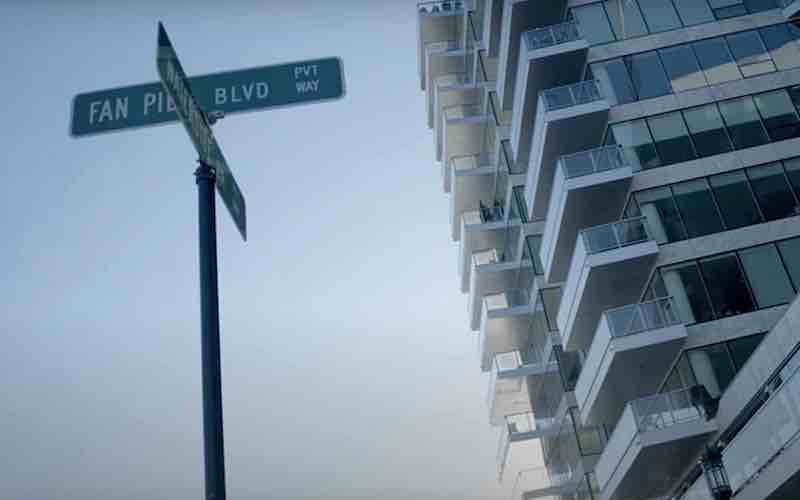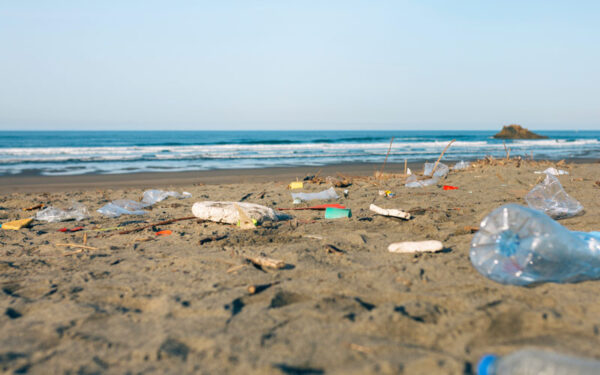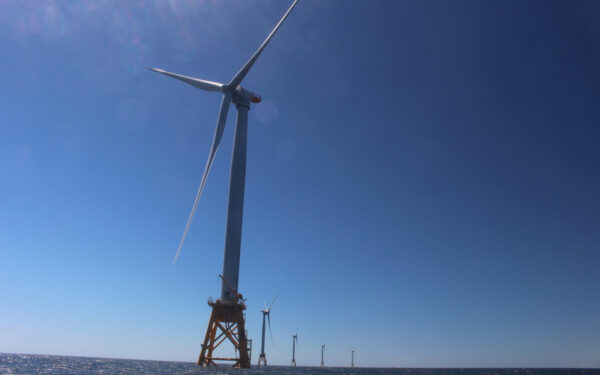
Private developers deliberately obscure the lines between public and private space along Boston’s waterfront – with the goal to make the general public feel unwelcome – even though we all have the legal right to access much of our waterfront lands.
What does a story about a parking ticket have to do with public access to Boston Harbor? When it comes to Boston’s Seaport neighborhood, quite a bit.
Sean Murphy at the Boston Globe recently wrote about Dan Simovici. In August, the 77-year-old – a retired college professor who is disabled – and his wife received a $40 “parking ticket” after a visit to the Seaport. Simovici had parked on Fan Pier Boulevard without realizing that the street is private and owned by developers.
As Murphy notes in his story, Simovici couldn’t find any signs to indicate he was on a private street after he received his ticket. Neither could Murphy. “The only hint of its status as private property I found was ‘PVT WAY’ written on the signs that give the names of the streets, 15 feet above the sidewalks, which I suspect are not widely noticed or understood,” writes Murphy.
This is hardly an isolated incident. Private developers deliberately obscure the lines between public and private space along Boston’s waterfront – with the goal to make the general public feel unwelcome – even though we all have the legal right to access much of our waterfront lands.
It’s time for a culture shift along Boston’s waterfront, one in which private developers become part of the solution to create a vibrant and welcoming Boston Harbor for all.
Seaport: Public vs. Private
What is and is not public property is a real issue in the Seaport because so much of the land there is subject to state regulations governing the use of tidelands. The waterfront land on which many private developments are built is “on loan” from the state: Developers are allowed to construct projects in these prime locations in exchange for providing public access, benefits, and amenities.
But if you take a walk through the Seaport – as both Dan Simovici and Sean Murphy discovered – you’d be hard-pressed to know the difference between public and private land. And you’d be especially surprised to realize that you have the legal right to access much of the land closest to the harbor, regardless of who owns it. That’s because many developers don’t want you to know these public spaces are there for you, not them.
Over the last several years, CLF has held “Pitch a Blanket” events to remind people that we all have the right to enjoy the public space along Boston Harbor – even when that space looks private and even if private actors sometimes close that space off when they aren’t supposed to. You can read about those events here, here, and here. The COVID-19 pandemic prevented us from holding another “Pitch a Blanket” night this year, but this crisis has reminded us how important access to outdoor space is, especially for public health.
What’s the Solution? Better Signage in the Seaport
These private parking tickets probably aren’t enforceable, but that’s not the point. The confusion about what is public and private land in the Seaport is a problem – one that goes beyond parking tickets. Private developers deliberately obfuscate the public’s legal rights to access and enjoy waterfront land.
One simple solution? Better signage.
Signs that make it clear what land is private or public – better yet, signs that welcome the people to use public space – would help address these misunderstandings. They also would go a long way to protecting open space from encroachment by private interests.
But more prominent signage is not enough. The trend toward privatizing public spaces signals a much bigger issue. We need a shift in culture on the waterfront. This means new practices and programming that promote and invite the public to access these lands. More people must be made aware that we all have a right to enjoy the public spaces there. And there must be more formal and informal activities – like our Pitch-A-Blanket events – to make it clear that you don’t have to own an expensive condo to use the neighborhood’s parks and lawns.
Every choice that developers make in designing and programming of waterfront spaces impacts the public’s waterfront experience. They need to do better.
Dan Simovici’s $40 parking ticket points to a much larger problem. We all need to do more to protect the People’s Harbor.
We’re continuing our efforts to both promote public access and highlight the threat of climate change. Will you join us? Visit our People’s Harbor page and sign our pledge. Together, we can take back our People’s Harbor and create a healthy, thriving waterfront – for all.




